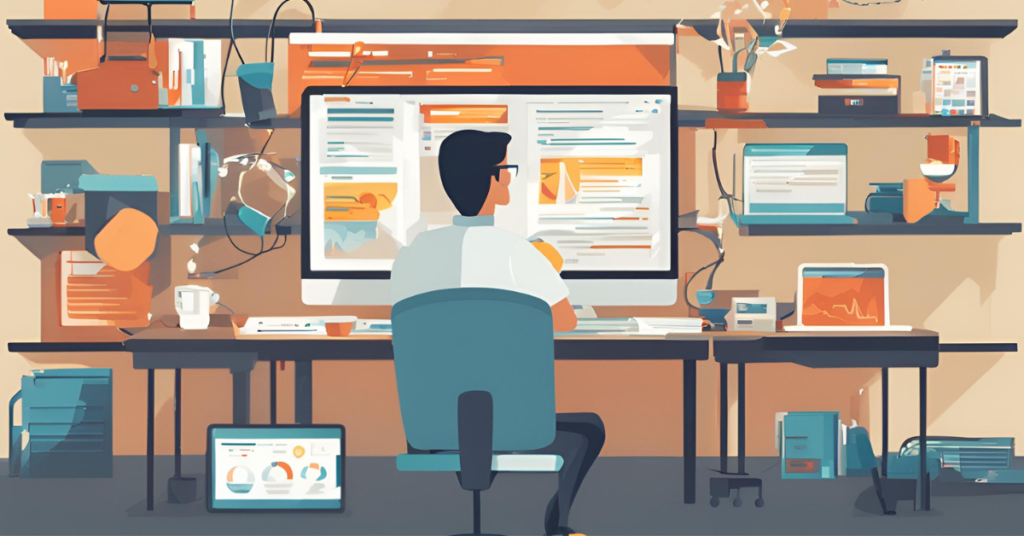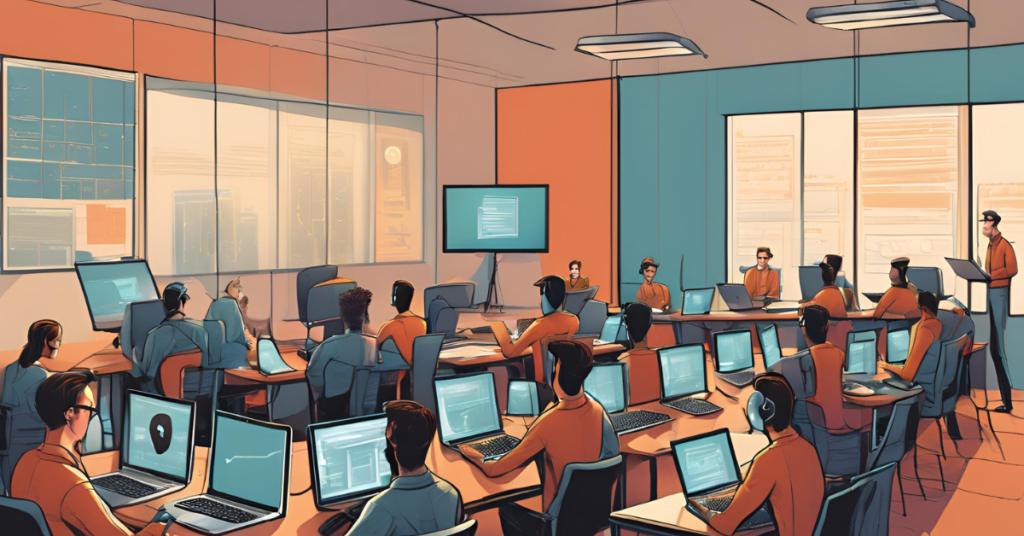
Change is the only constant in the ever-evolving field of software testing. Drawing from my extensive experience, join us on a journey into the future as we explore the emerging trends and technologies that are reshaping the future of software testing.
The Rise of AI and Machine Learning in Testing
Imagine a world where software not only undergoes testing but also learns and adapts on its own. Artificial Intelligence (AI) and Machine Learning (ML) are more than mere buzzwords; they are revolutionizing the way we approach testing.
Meet Alex, a testing bot infused with machine learning capabilities. Alex identifies patterns in test data and learns from every testing cycle, eliminating repetitive tasks and allowing testers to focus on more complex scenarios. AI and ML in testing enhance accuracy, speed up processes, and reduce human error, making them indispensable in modern software testing.
Continuous Testing: From Buzz to Best Practice
Continuous Testing isn’t just a trend; it’s a paradigm shift. In today’s fast-paced development environments, the need for continuous feedback is paramount. Testing is no longer a standalone phase but an integral part of the development pipeline.
Consider Sarah, a seasoned developer who, with continuous testing, receives instant feedback on her code changes. Errors are caught early, making the development cycle smoother and more collaborative. Continuous testing integrates automated tests into the development process, ensuring that code changes do not introduce new bugs.
IoT and Its Impact on Testing
The Internet of Things (IoT) is connecting our world like never before, from smart homes to industrial machinery. This interconnectedness poses unique challenges for software testing.
Picture James, a tester facing the challenge of testing software interacting with numerous devices. Innovative testing approaches like simulated environments and real-time data analytics ensure the reliability and security of the IoT ecosystem. Testing IoT devices requires understanding the complex interactions between hardware and software, as well as addressing security vulnerabilities and performance issues.
Blockchain: A New Frontier for Testing
Blockchain technology, initially associated with cryptocurrencies, has found applications in various industries, presenting new challenges for testing.
Consider Emma, a testing expert navigating uncharted territory while testing a blockchain-based supply chain solution. Through meticulous testing of smart contracts and consensus algorithms, she ensures the system’s integrity while gaining a deep understanding of this revolutionary technology. Blockchain testing involves validating transactions, verifying security, and ensuring the correct execution of smart contracts.
Embracing Low-Code and No-Code Platforms
In the pursuit of agility, low-code and no-code platforms are gaining popularity. These platforms empower non-technical users to build applications, but how does testing fit into this picture?
Enter Dave, a tester adapting to a no-code platform. Testing becomes more accessible as Dave collaborates with business users to ensure the application meets their needs. The democratization of testing has begun! Low-code and no-code platforms enable faster development cycles, but they also require thorough testing to ensure functionality and security.
The Importance of Automation in Modern Testing
Automation is a cornerstone of modern testing practices. It offers numerous benefits, including increased test coverage, faster execution, and more consistent results.
Automation tools help testers automate repetitive tasks, allowing them to focus on more complex scenarios. Automation reduces the risk of human error and enhances the efficiency of the testing process, making it a crucial component of any testing strategy.
Shift-Left Testing Approach
The shift-left testing approach involves integrating testing earlier in the software development lifecycle. By identifying and addressing defects early, teams can reduce costs and improve product quality.
Shift-left testing emphasizes collaboration between developers and testers, enabling early detection of issues and fostering a culture of quality. This approach aligns with agile methodologies and continuous integration practices, ensuring that testing is an integral part of the development process from the beginning.
The Role of DevOps in Software Testing
DevOps bridges the gap between development and operations, promoting collaboration and automation. In software testing, DevOps practices enhance efficiency and speed up the delivery process.
Continuous integration and continuous deployment (CI/CD) pipelines, along with automated testing, ensure that code changes are tested and deployed quickly and reliably. DevOps fosters a culture of continuous improvement, where testing is seamlessly integrated into the development and deployment processes.
Performance Testing in the Age of Microservices
Microservices architecture breaks down applications into smaller, independent services, each with its own functionality. While this approach offers scalability and flexibility, it also introduces challenges in performance testing.
Effective performance testing of microservices involves monitoring the interactions between services, ensuring they perform well under various load conditions. Tools like JMeter and Gatling help simulate traffic and analyze the performance of microservices, ensuring that the system as a whole can handle real-world scenarios.
Security Testing: More Crucial Than Ever
With increasing cyber threats, security testing has become a critical aspect of software development. Ensuring that applications are secure from vulnerabilities is paramount.
Modern security testing tools and practices, such as penetration testing, static and dynamic analysis, and vulnerability scanning, help identify and mitigate potential security risks. Security testing must be an ongoing process, integrated into the development lifecycle to protect sensitive data and maintain user trust.
User Experience (UX) Testing
User experience (UX) is a key factor in the success of any software application. UX testing focuses on evaluating how users interact with the application and identifying areas for improvement.
Methods for UX testing include usability testing, A/B testing, and user surveys. By gathering feedback from real users, developers can make informed decisions to enhance the overall user experience, ensuring that the application is intuitive and user-friendly.
Testing in Agile Environments
Agile methodology emphasizes iterative development, where requirements and solutions evolve through collaboration. Testing in agile environments must be adaptive and responsive to changes.
Agile testing strategies include continuous integration, test-driven development (TDD), and behavior-driven development (BDD). These practices ensure that testing keeps pace with development, maintaining high standards of quality throughout the project.
Cloud-Based Testing Solutions
Cloud-based testing offers numerous advantages, including scalability, flexibility, and cost-efficiency. These solutions enable testers to access a wide range of environments and tools without the need for extensive infrastructure.
Popular cloud testing platforms like AWS Device Farm, BrowserStack, and Sauce Labs provide comprehensive testing capabilities, allowing teams to test their applications across different devices and browsers. Cloud-based testing facilitates collaboration and accelerates the testing process, making it an essential tool for modern development teams.
Conclusion
The future of software testing is bright and full of exciting possibilities. From AI and machine learning to blockchain and IoT, emerging trends and technologies are transforming the way we test software.
FAQs
What is the role of AI in software testing?
AI in software testing automates repetitive tasks, improves accuracy, and speeds up the testing process. AI-driven tools can identify patterns in test data, predict potential issues, and learn from past testing cycles, enhancing the overall efficiency of testing.
How does continuous testing improve software development?
Continuous testing integrates automated tests into the development process, providing instant feedback on code changes. This approach catches errors early, reduces the risk of defects in the final product, and ensures a smoother, more collaborative development cycle.
What are the challenges of testing IoT devices?
Testing IoT devices involves managing the complexity of interactions between various hardware and software components. Challenges include ensuring security, reliability, and performance across different devices and environments, as well as handling real-time data analytics.
How do blockchain applications affect testing practices?
Blockchain applications require specialized testing practices to validate transactions, ensure security, and verify the correct execution of smart contracts. Testers must focus on the integrity of consensus algorithms and the robustness of the blockchain network.
Why are low-code platforms significant in testing?
Low-code platforms enable faster development by allowing non-technical users to create applications. In testing, these platforms democratize the process, making it more accessible and collaborative. However, thorough testing is still necessary to ensure the functionality and security of the applications.
Have a wonderful day ahead!






ChatGPT has been a gamechanger, an amazing wingman. Happy Bughunting!